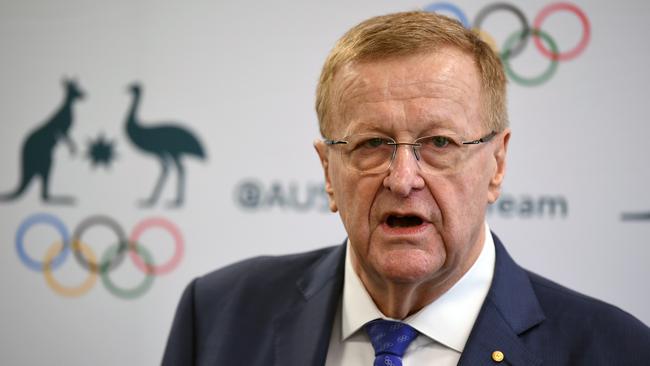Cautious strategy shields Australian Olympic Foundation funds from worst
The Australian Olympic Foundation has fared better than some with its investments as markets have taken a beating from the coronavirus pandemic.

Losing $20m on the stockmarket in three months looks like a huge amount of money, but it could have been worse for Australian sport’s biggest and most successful investment fund.
The Australian Olympic Foundation, started with an $88m windfall from the Sydney Olympics back in 2000, has been contributing tens of millions of dollars to send athletes to the Games ever since.
The foundation had a stellar 2019, when stockmarkets surged and the money it had invested rose by 13.6 per cent to $171.4m after making about $6.25m in distributions to the Australian Olympic Committee.
But with markets smashed in the economic shutdown because of the COVID-19 pandemic, the AOF’s assets fell 11.9 per cent back to $150.85m as at March 31, after it had distributed $1.562m to the AOC in the quarter.
It could have been worse. The decrease compared to a fall of 23 per cent in the ASX200 Accumulation Index in the same time, meaning the AOC had outperformed — or at least lost less than — the wider market.
In particular, there was some repositioning of the AOF’s investment portfolio during the second half of 2019, which saw its cash positions increase as those charged with looking after the money began contemplating an end to the bull market on stock exchanges before the coronavirus outbreak.
“Concerns for the global economy in 2020 have increased following the outbreak of COVID-19,” AOC president and AOF chairman John Coates said in the AOF’s recently published annual report. “The AOF is well positioned though. It had a stellar year in 2019, which created a significant buffer. The AOF has also continued to build the fund in line with its stated investment objectives and increased measures to protect the downside risk.”
The fund has about 10 per cent of its holdings in cash and in addition has monitored the holdings of the dozen fund managers it has invested in shares, investment funds and property funds to keep its total underlying cash holdings across its portfolio to 15 per cent. During 2019, it also put $5m in a Kapstream cash enhanced fund to look for higher cash returns than those being offered by term deposits, moving the money from a fund exposed to the commercial property sector.
Coates told The Australian that even if markets remain volatile and the AOF’s assets fell in value, it had more than enough to continue its primary role of distributing at least $25m over four years to the AOC.
“You can’t predict these things, but the market had enjoyed a good run. We have avoided higher-risk assets like hedge funds and private equity and have been looking at more cash products. We have enough cash along to make our distributions to the AOC for this year, and next year as well and the year after,” he said.
He said the fund’s investment philosophy hadn’t been perfect over two decades, but the quality of the investment committee overseeing the money, headed by former opposition leader John Hewson and featuring ex-Macquarie director Helen Nugent, Gold Coast private client adviser Angus Douglas and former AMP CEO Paul Batchelor, and the sheer diversity of its portfolio meant it had survived with its millions relatively intact.






To join the conversation, please log in. Don't have an account? Register
Join the conversation, you are commenting as Logout